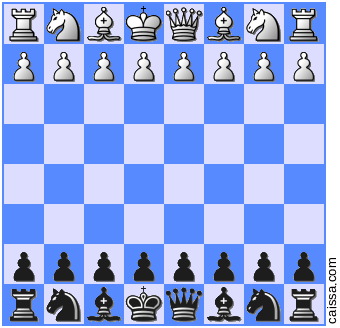So, as a new player to the game, one of the things I've been working on is trying to develop an opening repertoire that fits my style. I've been quite happy as white with opening with The English (1. c4) but have been bouncing around with different setups for black to see what works for me.
For playing against 1. e4 I did some research/trialing on a few different systems. The open games (responding 1... e5) don't really appeal to me. I tried the French and had decent luck with it, but found the position to be very restrictive with the blocked in bishop. I fooled around just a bit with the Caro-Kann, but my opponents wouldn't oblige and play the main lines. I played with the Philodor a bit (playing the e5 first to see if I could get into the falkbeer countergambit and then the philodor as a backup) but found it just as restrictive as the French. The Sicilian I sort of stayed away from due to the vast depth of theory. Playing e6 and a queenside fianchetto was working okay for me, but I wanted to go with something a bit more aggressive.
I read through Yasser Seirwan's Winning Chess Openings and was really intrigued with his thoughts on the Pirc Defense. The only thing I found a bit restrictive was having the knight blocking the bishop. It often ended up that it held me back from making a really strong move. It's been said that with chess one often thinks "if only I could make two moves in a row...". How true!
I did a bit more research into kingside fianchetto openings and came across The Robatcsh Defense. It's often called The Modern, and very often confused with The Pirc. They share a similar structure and the Robatcsh can very easily transpose into the Pirc if of benefit.
The basic philosophy behind the Robatsch (and other defenses of similar structure) is that white will expand his territory with a strong pawn center, and black will align his pieces around it for an unbalanced counter attack. White commits himself to an aggressive structure, and black retains flexibility.
The basic opening is:
1... g6
2... Bg7 (fianchettoing the bishop to control the h8-a1 diagonal)
3... d6 (preventing white from advancing with e5)
Black delays playing the king's knight so as not to block off the powerful bishop with Nf6. Nf6 however is a very strong defender of the h-file though! As such, you may have to play it eventually if required, or one can try defending by advancing the h-pawn to protect against a quick coordinated strike by white's queen and knight (I got quickly mated a few times before figuring this out, lol). The king's knight will fit nicely at Ne7 protecting the center and making room for a castling. This means the e-pawn must be moved forward, which can get in the way of black's light squared bishop initially if moved to e6.
Although black maintains great flexibility, he will have to time the counter-attack right or get steamrolled if white knows what he is doing. This means that black must pay very, very close attention to the number of defenders and attackers on white's pieces and be prepared to strike out when at an advantage.
Anyway, to illustrate some of these principles here's a game from the other night:
1. e4 g6
2. d4 Bg7
3. Nf3 d6
4. Bc4 c6
White opened up with a pretty standard two pawn center with developing his knight and bishop. I replied back with the standard Robatsch Defense. White had both his e-pawn and light squared bishop hanging, which gave me an idea for how to move forward on the queen-side.
5. O-O b5
6. Bb3 e6
7. a3 Ne7
8. Re1 Nd7
White castled and I thrust my b-pawn forward to kick his bishop back and cause him to lose some tempo. I then advanced my e-pawn to e6 to let me bring my knights into the center and castle. White advanced his a-pawn to defend on the queenside and brought his rook out to bear down on the center and protect the e-pawn.
9. Bg5 O-O
10. h3 c5
He then brought out his dark squared biship to pin my knight to my queen, I castled, he made a luft for his king, and I thrust out in the center with my c-pawn.
11. dxc5 Nxc5
12. Ba2 Bxb2
13. Bxe7 Qxe7
14. Nc3 Bxc3
He took the bait of taking my c-pawn, not wanting to lose his center. This let me take back with my knight, attacking his bishop again. More importantly, it opened up the diagonal for me to trap and attack his rook. He tried to punch back by threatening my queen and rook but it was just a simple recapture for me. His only option to get some minimal compensation for his rook was to get his knight out of the way to let his queen recapture. He did move his knight to the wrong square, allowing me to first capture it and then fork the rooks. Either way though, at best he was going to be down a rook for a knight in material. When he realised his mistake at this point, white resigned (I would have prefered to play it out a bit more first).
Anyway, as you can see, although black starts off in a fairly passive manner, this opening provide some great flexibility with how black chooses to develop and some great counter-attacking opportunity if one can orchestrate and time the offensive well.

No comments:
Post a Comment